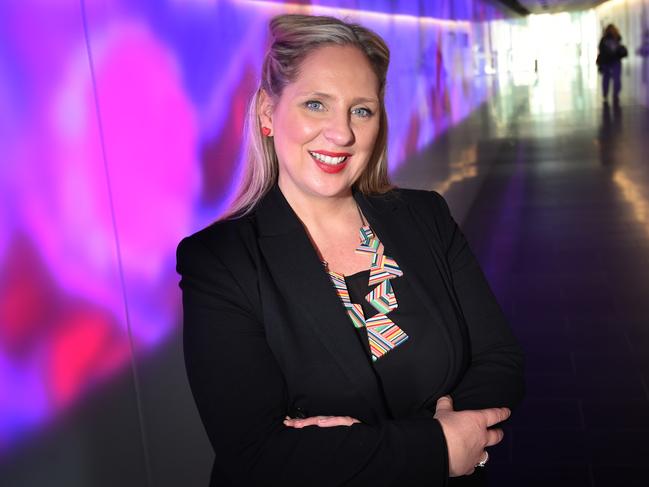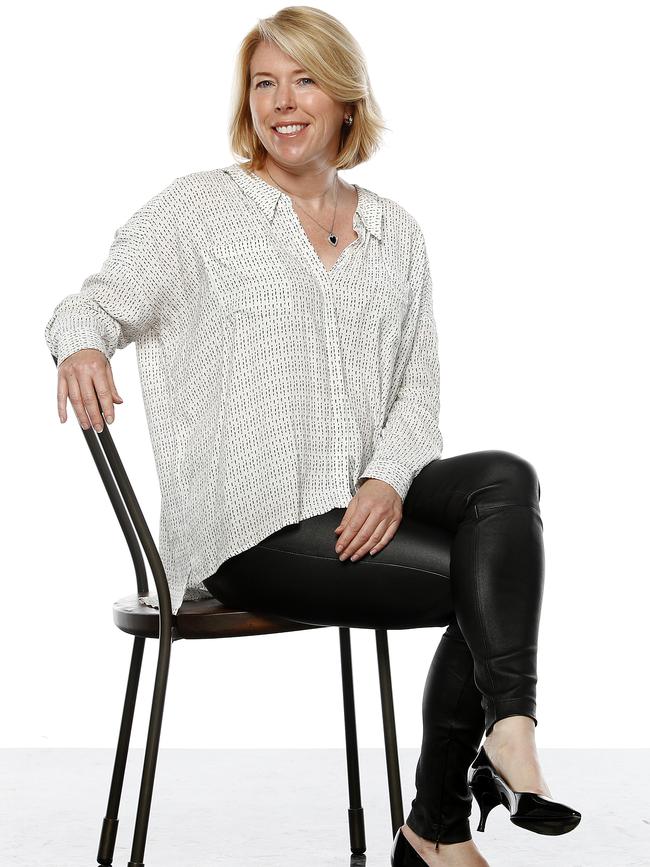Women leading the way in medical and science research
They are the leading lights on the cutting edge of medicine — working tiresly to find cures for diseases such as cancer, Influenza and debilitating genetic conditions. Jane Hansen meets the women leaving their mark in a male-dominated profession.
NSW
Don't miss out on the headlines from NSW. Followed categories will be added to My News.
These are the professors, physicians and scientists on the cutting edge of medicine.
They are working on everything from developing vaccines for diabetes to curing the toughest of cancers. And they are all women making their mark in the once male-dominated world of science and medicine.
But they have had to come a long way and break through many barriers.
Back in 1860, the editor of the Australian Medical Journal described women who wanted to go into medicine as “a woman who voluntarily devotes herself to a state in which the abandonment of the domestic qualification seems a necessity, is a being whom men do not love and with whom women can hardly sympathise”.
But by 2019, women comprise just over half of all Bachelor of science and PhD graduates and 53 per cent of medical graduates are women.
But those equal statistics are yet to transfer into senior levels at universities and research institutes, with only two women in every 10 investigators at senior levels, according to a science in Australia gender equity study.
MORE FROM JANE HANSEN
Baby with heart on wrong side caught up in hospital stoush
Free flu shot for children under five
It’s why these 10 women are the leading lights in their fields.
By targeting a specific protein called the HCK protein in pancreatic cancer, Dr Ashleigh Poh may find a cure for one of the hardest to treat cancers which still only has a 5 per cent cure rate.
“I’ve lost family member to cancer so I see it as a personal motivation but I am also motivated by the patients I meet,” the 29-year-old told The Sunday Telegraph.

Influenza causes over 3500 deaths a year in Australia and a seasonal vaccine is required each year for circulating strains. Professor Katherine Kedzierska, 47, and her team hope to develop a universal vaccine that will only require one or two shots.
“I just love my research work and working with my team of really talented people, it is my passion,” the head of the Human T cell Laboratory Melbourne Doherty Institute University of Melbourne.
Dr Misty Jenkins is working on using the body’s own immune cells called T cells, and re-engineering them to recognise the brain tumour cells and destroy them. Trails underway in the lab on DIPG, which is currently 100 per cent fatal in kids.
“These kids only last nine months, the lucky ones are alive after 12 months, it is a truly awful disease,” the 40-year-old from the Walter Eliza Hall Institute for Medical Research
Dr Emma Hamilton Williams, 45, is developing an immunotherapy vaccine that may cure
type 1 diabetes, a condition which affects over 6500 children in Australia.
“We are hoping to develop a vaccine for type 1 diabetes to prevent it occurring, or in the recently diagnosed, slow the progression,” the senior research fellow at the University of Queensland Diamantina Institute


Dr Kerrie McDonald funded her own research into personalised medicine for cancer, which is genetically matched with specific drugs, when a young boy called Lachie was diagnosed with brain cancer. Brain cancer still has one of the worst outcomes due to a lack of research dollars. Now, she drives where the charity money raised by Cure Brain Cancer will be invested in cutting edge research.
Dr Laura McCaughey is working on developing pyocins which are new antibiotics to tackle the most antibiotic resistance bacteria.
“I am trying to develop novel antibiotics, called protein antibiotics or pyocins, and trying to develop them as therapeutic for humans and they kill a bacteria called Pseudomonas aeruginosa. It’s a very bad one for antibiotic resistance, it’s one of the priority pathogens to try and develop antibiotics for.
“It’s a horrible scenario, but there are some strains to that bacteria where no antibiotics work against it, it’s just your luck if you can fight it yourself.”

Dr Emily Colvin from the University of Sydney’s Kolling Institute of Medical Research is working on tackling ovarian tumours by treating the environment around the tumour which permits the cancer to grow.
“I’m investigating the role of the ovarian tumour micro-environment, the non-cancer cells around the tumour form almost a scaffold that allows tumour cells to survive, spread and evade immune destruction,” Dr Colvin said.
“These cells are not cancerous but are essential to allow cancer to survive in the body and we want to use them as therapeutic targets to treat cancer.”

Professor Nadia Badawi is a medical researcher and expert on newborn encephalopathy and cerebral palsy. She is part of a team trialling Erythropoietin (EPO), a hormone which makes more red blood cells naturally after brain injury to initiate repair.
“EPO seems to be a drug with a huge amount of potential, there is a lot of EPO receptors in the brain and when the brain has an insult of some kind, those EPO receptors turn on and they can turn stem cells around them into brain cells and go toward the injured area.”
Associate Professor Yazi Ke is currently developing gene therapy to treat both motor neurone disease and frontal temporal dementia.
“We have developed a new target in MND and frontal temporal dementia, a protein called TDP43 that causes the damage to neurons. We hope to target that to minimise the damage,” the 35-year-old Deputy Director (Operations) of the Dementia Research Centre, Macquarie University.


Neonatologist Dr Meredith Ward is currently investigating safer drugs for addicted pregnant women to minimise risk to unborn babies.
“There’s two different opioid replacements, one is buprenorphine which you don’t need to take every day, but not great evidence on safety concerns, and we also have safety concerns about how safe methadone is for the baby’s brain during pregnancy. We need to see which is a safer drug in pregnancy.” she said.
The Australian Academy of Science’s “Women in Stem Decadal Plan” found that “women in particular face barriers at all levels of the pipeline including in their years of education and at all levels in the workforce, with pronounced barriers presenting at senior levels”.
The federal government now has a national strategy, which it launched this year, to encourage young women to pursue opportunities in a field that will improve lives.


Dr Marguerite Evans-Galea, the co-founder and CEO of Women in STEMM (science, technology, engineering, maths and medicine) Australia, said a number of studies have “demonstrated that increased gender balance and diversity boosts productivity, innovation and profit in organisations”.
“STEMM is — and will continue to be — central to Australia’s health and economy,” she said.
“To ensure we have a globally competitive STEMM ecosystem with the best ideas, doing cutting-edge research, fostering collaborations between industry, academia and government, inspiring the next generation, we must actively promote diverse women in STEMM into leadership roles.


They are experts, let them lead. Our future STEMM leaders need stereotype-smashing role models.”
The women we are showcasing today are just a handful of many who are doing amazing things in these fields.
Most agree a great role model, from science teachers to parents to other medical professionals have inspired them to take on a career in STEMM.
They will surely serve as inspiration for the next generation.
